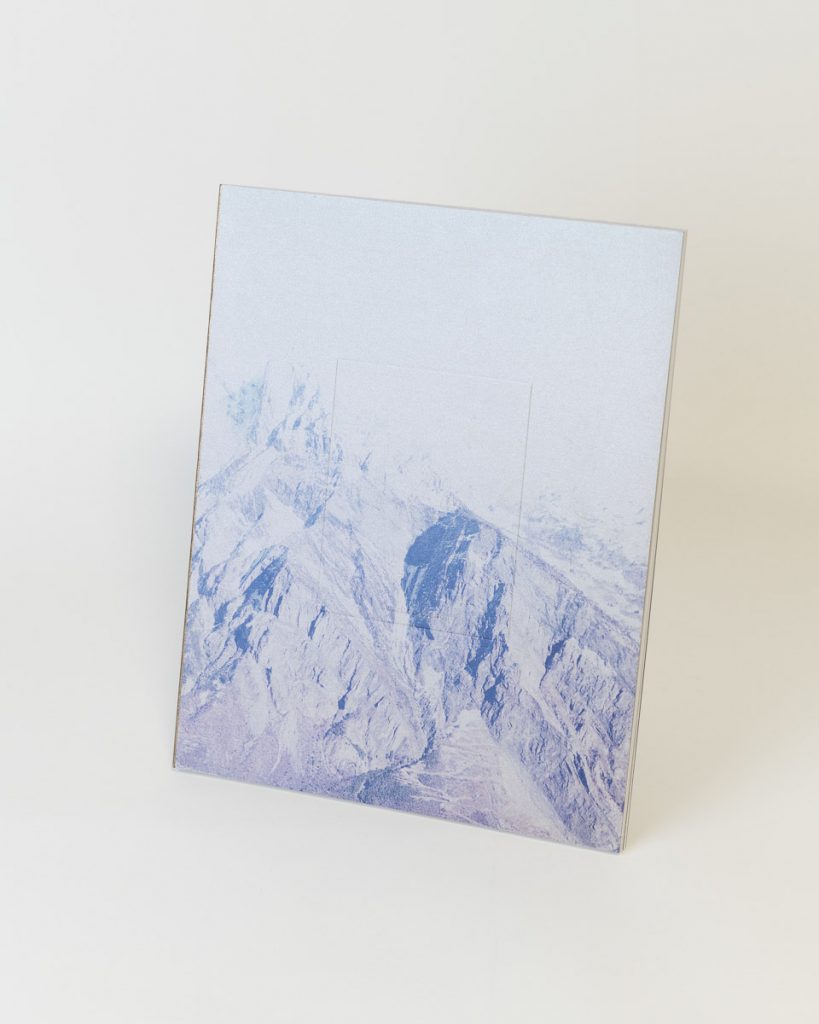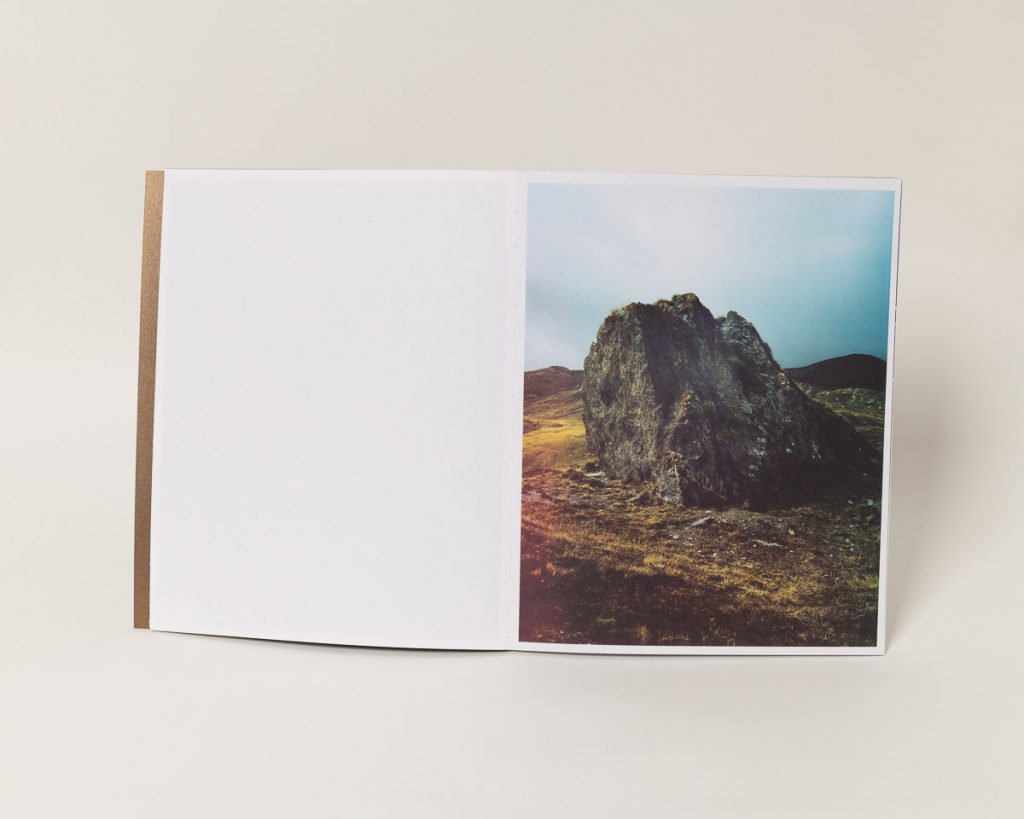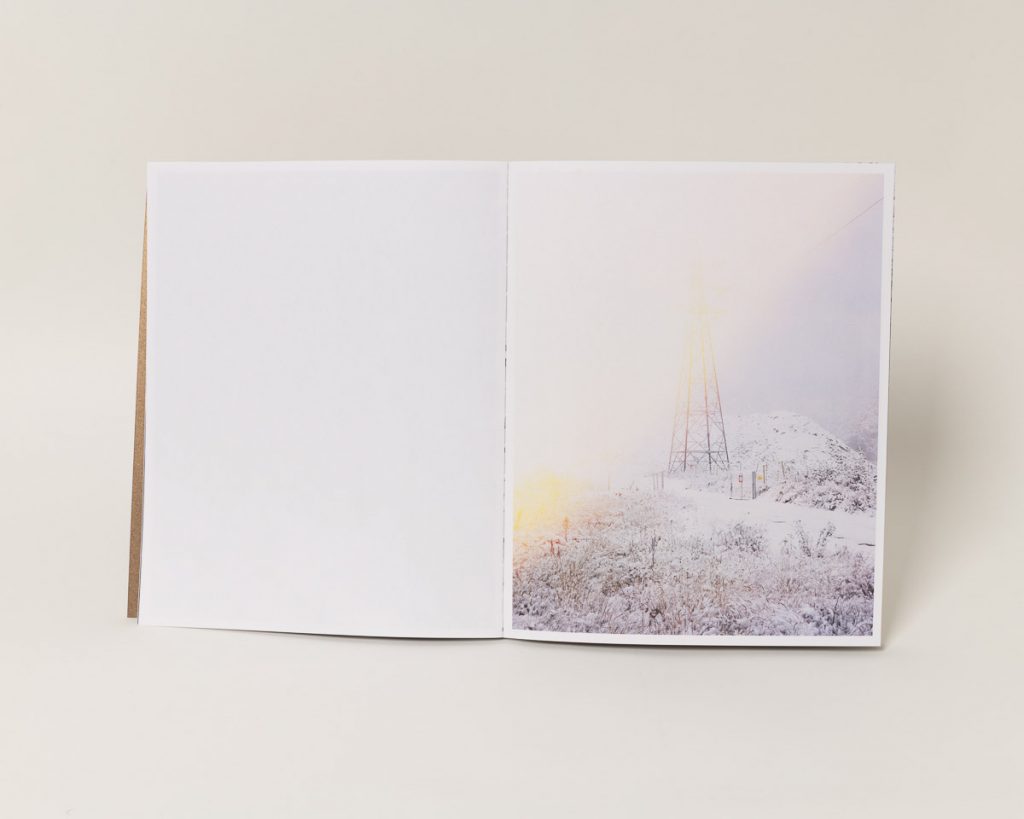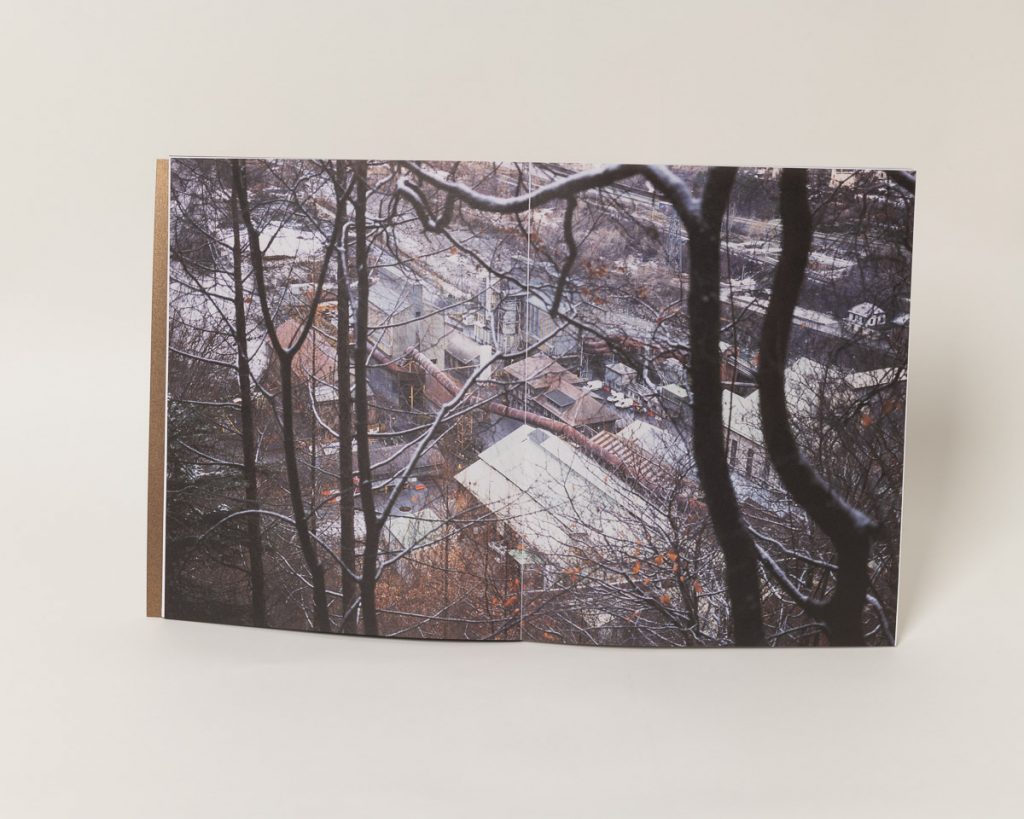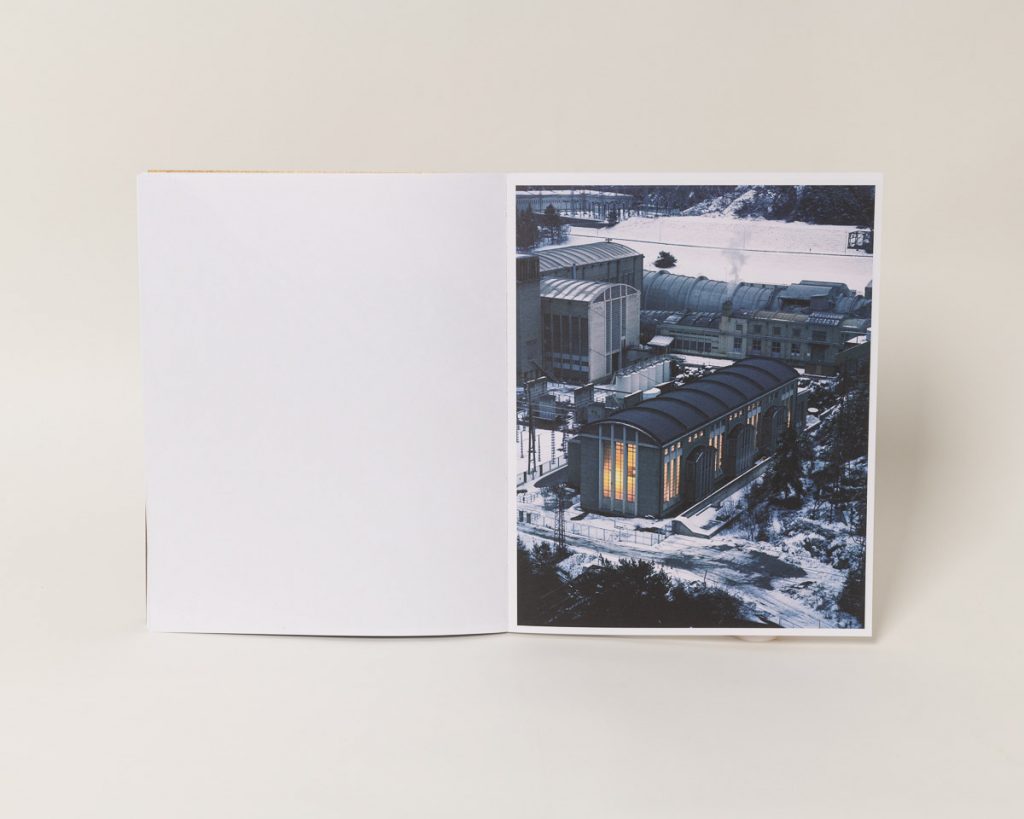Charbon blanc
The Maurienne valley, in the French Alps, presents a mastered and largely exploited landscape, marked by the ambiguities and contradictions inherited from its industrial history. The torrent of the Arc, which runs through it, was indeed conducive to the development of the aluminum industry, by its ability to supply the factories with hydroelectricity. Known as the “aluminum valley”, it is bordered by a freeway and soon by a high-speed train line between Lyon and Turin, a project however tainted by suspicions of corruption and environmental damage. Despite a few winter sports resorts, most of the space in the Maurienne is nevertheless uninhabitable, conjuring up the romantic image of a pure and sublime nature.
In Charbon blanc, a patient documentary work carried out on this territory between 2016 and 2019, photographer Teo Becher combines two complementary image regimes. Faithful to a conception of photography inseparable from a wandering within a defined space, he begins by physically experiencing the Maurienne landscape: being in the mountain, walking there, breathing there, as close as possible to the topography, to the point where this “uninhabitable” mountain becomes a central character in his book.
In parallel, influenced by the thought of Philippe Descola, for whom nature is a cultural construction and therefore the difference between nature and culture a nonsense (Par-delà nature et culture, 2005), and by Donna J. Haraway’s reflections on the Anthropocene (Staying with the Trouble, 2016, published in French by Mondes à faire, 2020), Teo Becher sought to photograph this moment when landscape and traces of human activity meet, in a relationship of interdependence rather than of opposition.
Although these two parts of the work are clearly part of a documentary tradition, they nevertheless blur the codes by accepting the chance and imperfection of silver chemistry, taking the reader into a dreamlike floating that reinforces this interdependence between human and landscape.
Finally, the book is punctuated by almost abstract images, taken from photographic films buried in different places along the Maurienne valley for periods ranging from a few weeks to two years. These photos are printed on pages that are partly uncut, so as to conceal them, accentuating their mysterious character. The book is accompanied by a short essay on the history of aluminium in the Maurienne written by Teo Becher.
| Photographer(s): | Text: |
| Teo Becher | Teo Becher |
| Format: | Pages: |
| 24 x 30 cm | 108 |
| Design: | Images: |
| Lucía Peluffo | 49 |
| Publisher: | Binding: |
| Le Bec en l'Air | Swiss binding |
| Printer: | Printing: |
| Palermo | Offset |
| Date: | Edition: |
| October, 2021 | 700 |
| Place: | |
| Brussels, Belgium |





